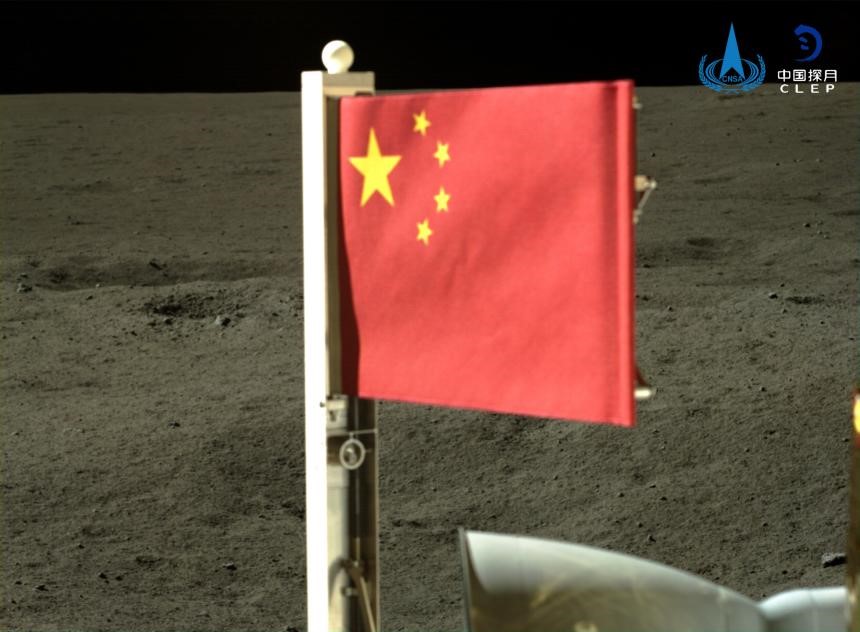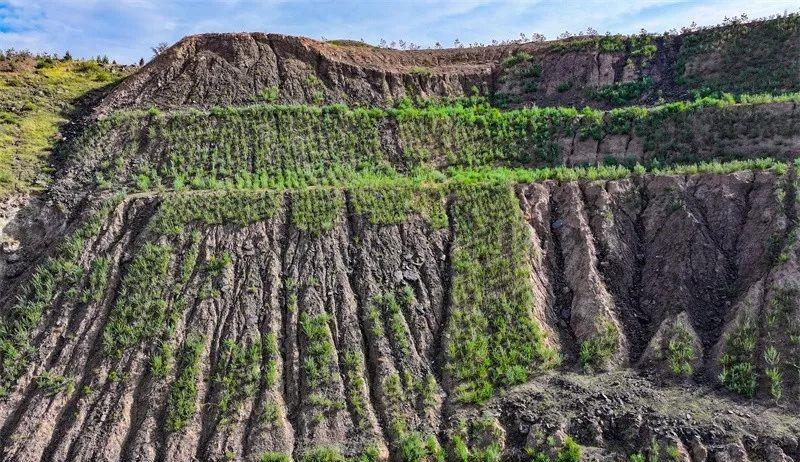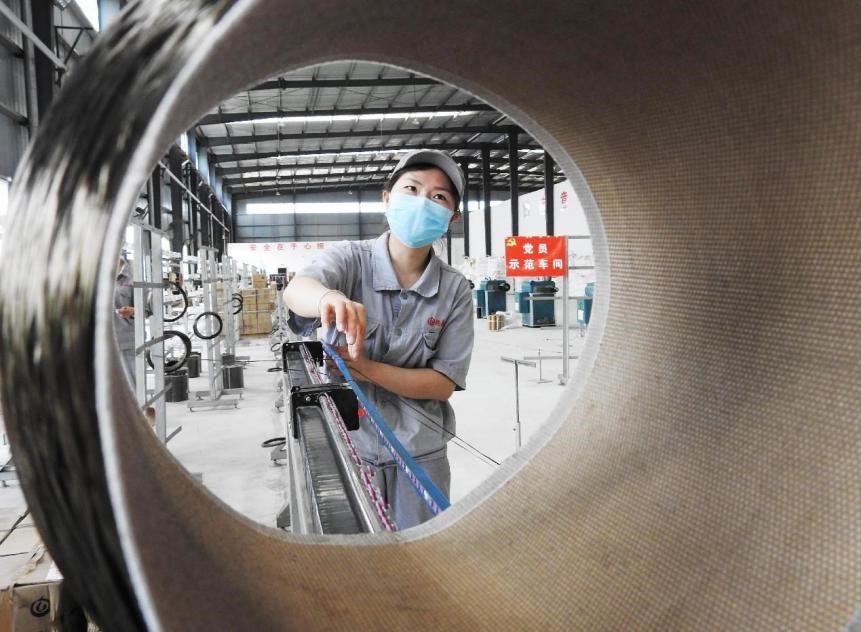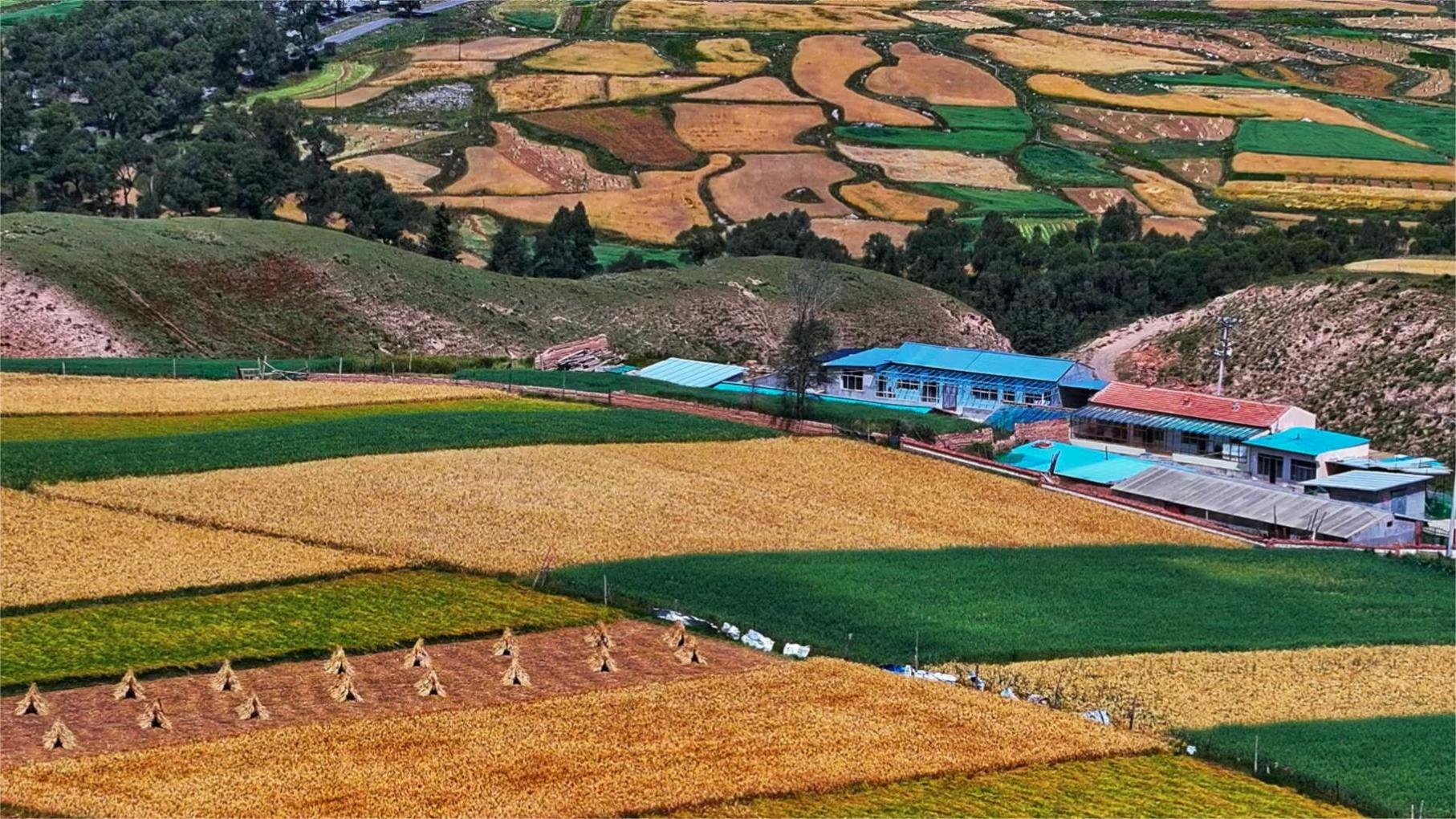Basalt rocks made into national flag carried by Chang'e-6 probe

A Chinese national flag carried by the lander of Chang'e-6 probe unfurls on the moon's far side, June 4. (Photo from the China National Space Administration)
On June 4 this year, a national flag carried by the lander of China's Chang'e-6 probe unfurled on the moon's far side, becoming the first national flag of any nation to be shown on the lunar far side.
The flag weighs only 11.3 grams, lighter than two 1-yuan coins. The threads used in it were made from a new high-performance material called basalt fiber. The fiber was produced by crushing natural basalt rocks, melting them and then drawing them into fibers. These fibers are only 1/3 the diameter of a human hair.
"Basalt fiber is lightweight, strong, corrosion-resistant, and environmentally friendly with a low carbon footprint. It can withstand temperatures ranging from -269 to 700 degrees Celsius, which further highlights its unique value," said Liu Jiaqi, an academician of the Chinese Academy of Sciences (CAS) and former director of the CAS Institute of Geology and Geophysics.
According to Liu, basalt rocks, in their natural form, are in a columnar shape, roughly as tall as a person. "They are abundant in China," he said.
Basalt deposits vary significantly, making it challenging to homogenize the raw material for fiber production. For over a decade, Zhu Zhaochun, head of a basalt mining company in Yuxian county, north China's Hebei province, has been working to tackle this technical challenge and improve the homogenization of the raw material.
The basalt used for the flag carried by the Chang'e-6 probe was sourced from Zhu's company. The company processes about 100,000 tons of basalt annually, but only 1/10 of this can be used to produce basalt fiber. The average price of this high-quality basalt is 600 yuan ($84.25) per ton, three times the price of basalt used for road construction.
How are rocks turned into fiber?

Photo shows a basalt mine in Yuxian county. (Photo/Geng Hui)
Traveling about 1,000 kilometers south from Yuxian county, People's Daily reporters arrived in Xiangyang, Hubei province, where Huierjie New Material Technology Co., Ltd. (Huierjie), the company that produced the basalt fiber on the national flag carried by the Chang'e-6 is located.
In the furnace, basalt rocks are melted into lava at high temperatures ranging from 1,450 to 1,500 degrees Celsius. The lava is then drawn through a platinum-rhodium alloy bushing, where high-speed drawing machines pull it into hundreds of fine, gold-brown threads, which are wound into strands.
Temperature control is a key technical challenge in the basalt fiber drawing process. After years of technological development, Huierjie can now produce basalt fiber with a diameter of just 5 microns, and each fiber can be drawn to a length of tens of thousands of meters.
An executive of the company told People's Daily that standard basalt fiber sells for 15,000 yuan per ton, while the new 5-micron basalt fiber product commands a price of 60,000 to 70,000 yuan per ton.
Basalt fiber has excellent insulation and radiation-resistant properties, but as an inorganic fiber, it has a smooth surface and is brittle, making it difficult to weave. To address this, Wuhan Yudahua Textile and Garment Group Co., Ltd. (Yudahua) collaborated with Wuhan Textile University to study how basalt fiber could be blended with viscose fiber and other materials, overcoming several key challenges in producing basalt fine yarn.
After delivering a prototype of the national flag on the Chang'e-6 probe in October 2023, the research team began seeking ways to bring their technological achievements to the market, aiming to further advance the high-performance fiber industry.
Yudahua developed a flame-retardant, high-temperature-resistant basalt fiber fabric. The material feels like pure cotton denim, but when exposed to an open flame, it won't be burned.

An employee works in a workshop of a basalt fiber technology company in southwest China's Sichuan province. (People's Daily Online/Deng Liangkui)
"Basalt fiber is attracting attention not only in the textile industry but also in the automotive, aerospace, and medical fields," said Cao Genyang, a professor at Wuhan Textile University and a member of the development team of the national flag carried by the Chang'e-6 probe.
The potential applications of basalt fiber are expanding. On the sea, marine net cages made of the material used in eco-friendly oyster farms can withstand typhoons up to force 12; in the vast desert, basalt fiber is made into wind turbine blades and photovoltaic brackets to make them more endurable. Besides, basalt fiber is also made into composite rebar and protective layers for cables.
In April this year, China's leading automaker FAW Group released a new vehicle model featuring interior components made from basalt fiber composites. These materials reduce the weight of the components by over 20 percent while maintaining their original performance and offering the added benefit of low odor.
Industry experts estimated that by 2030, the automotive sector's demand for basalt fiber could reach 320,000 tons, with an output value of 8.4 billion yuan, potentially supporting a downstream parts market worth over 47 billion yuan.
Today, China has become the largest producer of basalt fiber in the world. In 2023, China's basalt fiber production reached approximately 30,000 tons, accounting for about 75 percent of the global output, with 9,000 tons exported. As of September 2023, over 13,000 applications for basalt fiber patents were filed globally, more than 8,600, or 66 percent, were from China.
Innovation knows no bounds. At an extraterrestrial fiber laboratory of Donghua University in Shanghai, fibers are being drawn under simulated lunar conditions - without oxygen, in microgravity, and at low pressure - using lunar soil samples brought back by the Chang'e-5 mission.
"Lunar soil and basalt have similar chemical compositions. By adapting basalt fiber production techniques, fibers drawn from lunar soil could become construction materials for future lunar bases, meeting the needs for in-situ resource utilization," said Zhu Meifang, an academician of the CAS and dean of the College of Materials Science and Engineering at Donghua University.
Photos
Related Stories
- Chang'e-6 lunar samples have "distinct characteristics": study
- Simulation test stand for China's lunar landing mission completes test run
- Returned lunar glass beads indicate moon still alive 120 million years ago
- China outlines blueprint for international lunar research station
- China's lunar research station initiative welcomes new international partners
Copyright © 2024 People's Daily Online. All Rights Reserved.









